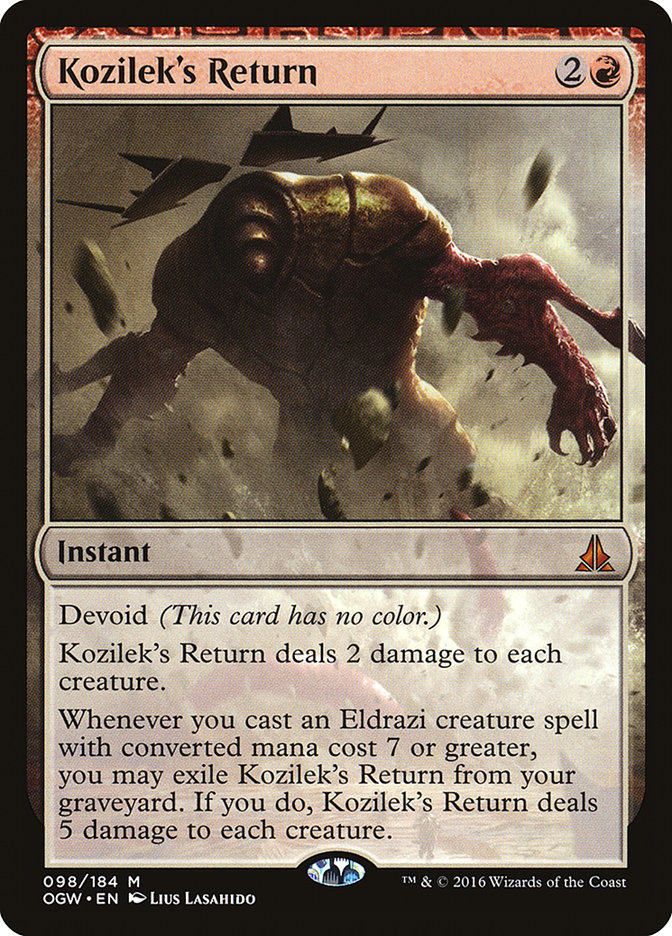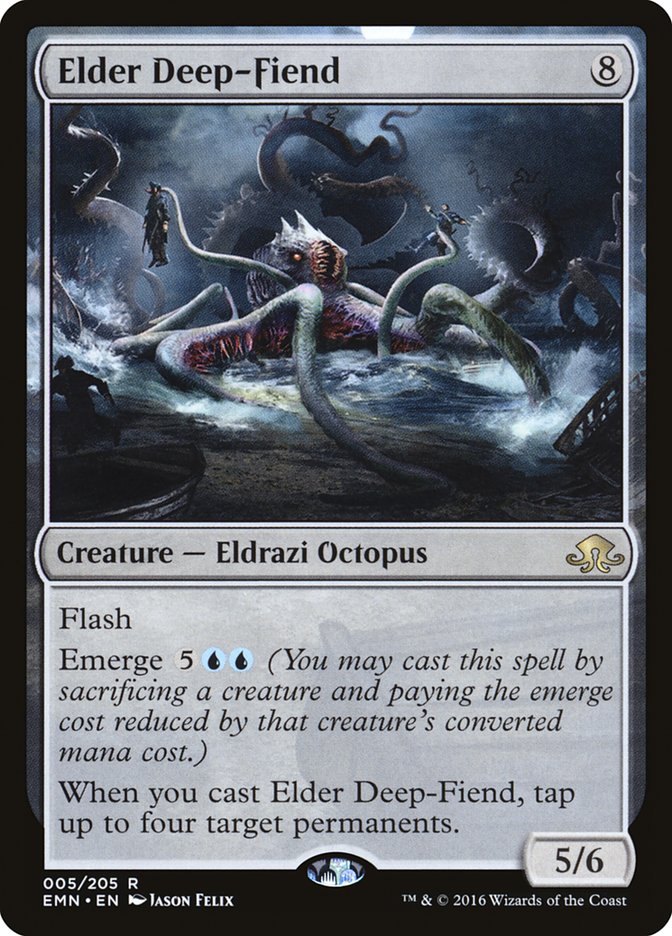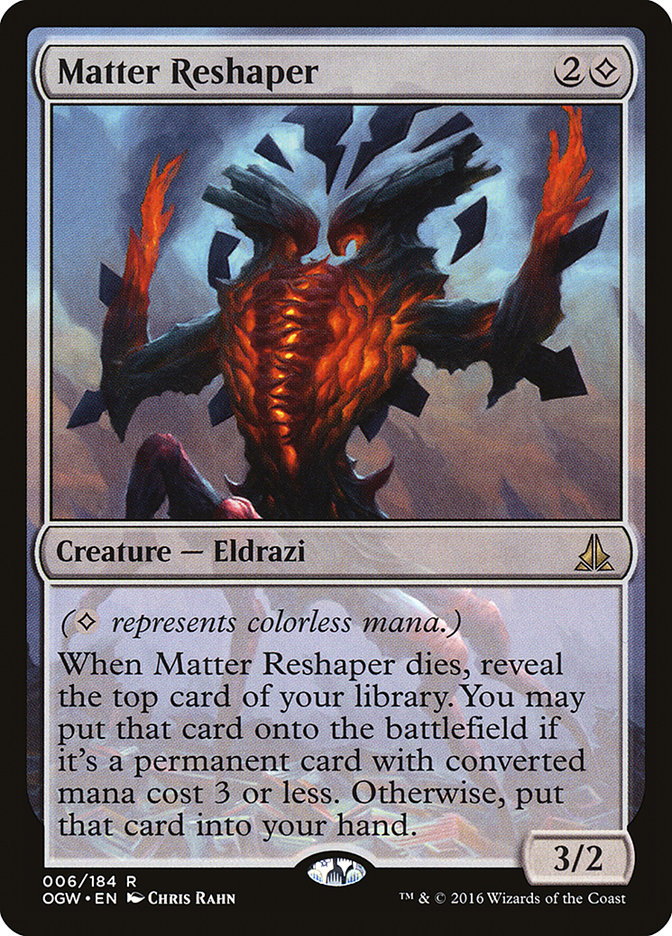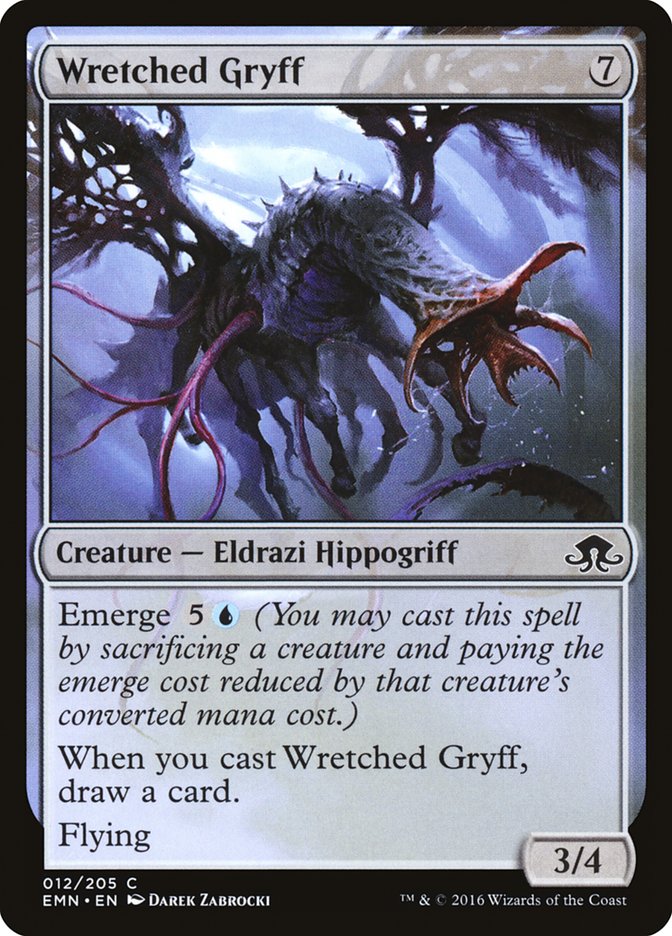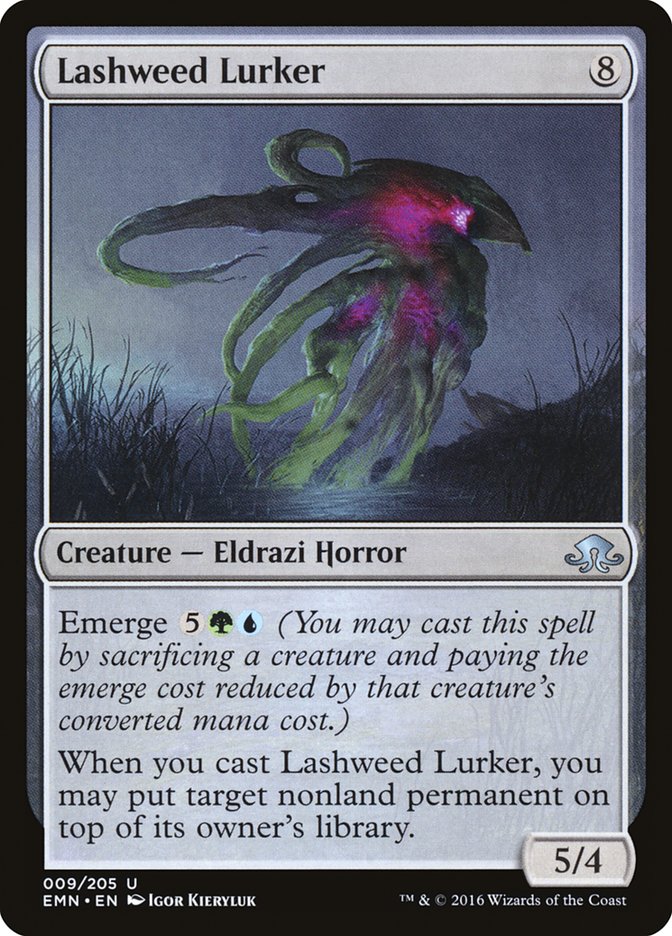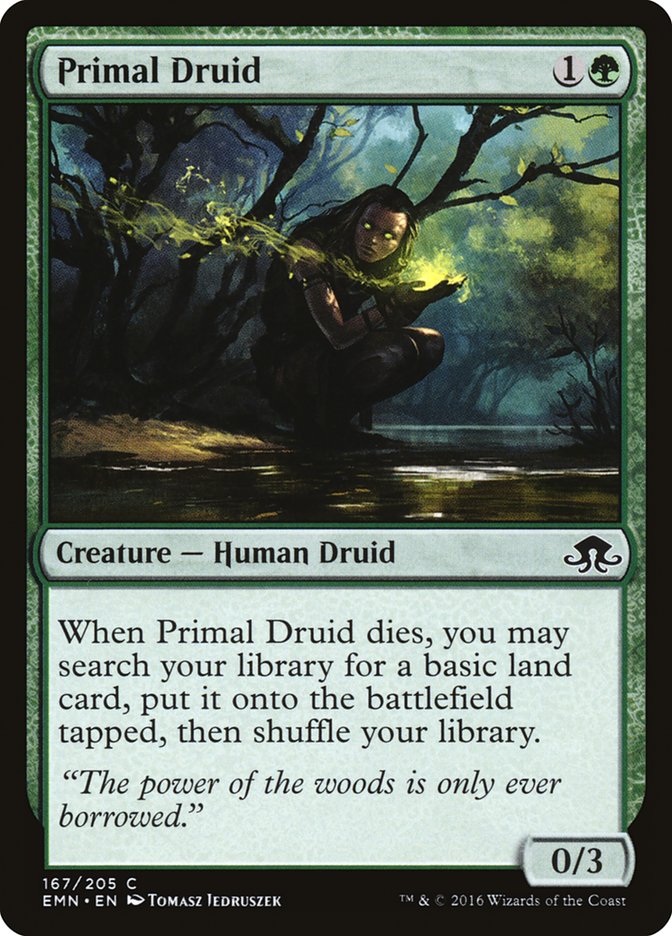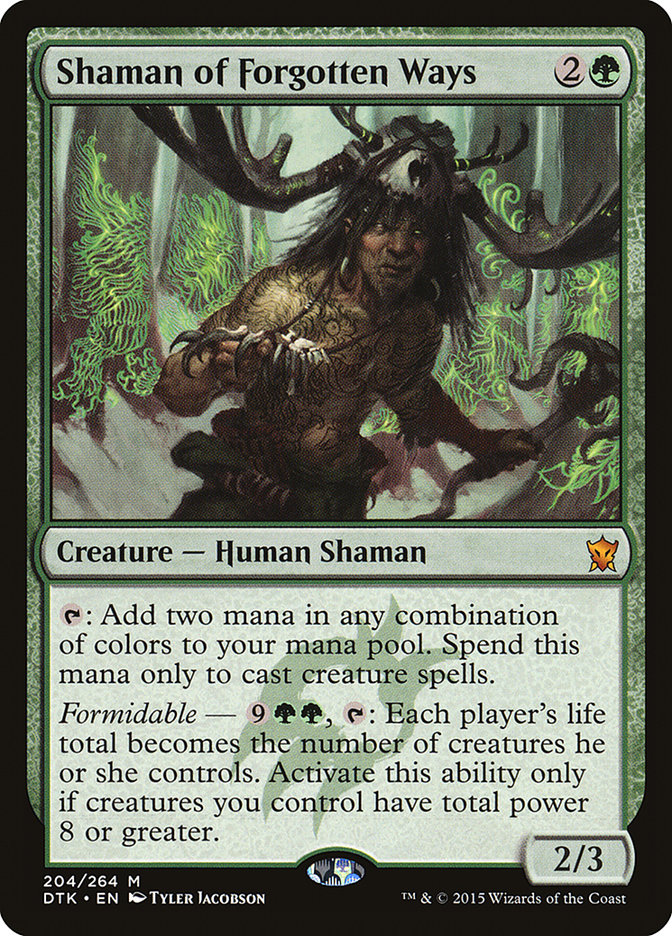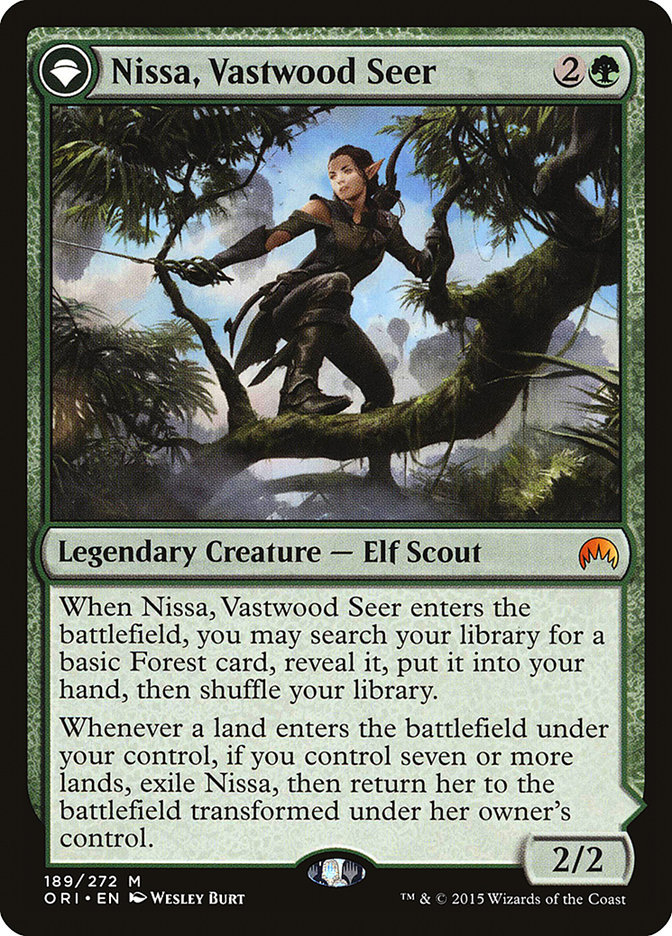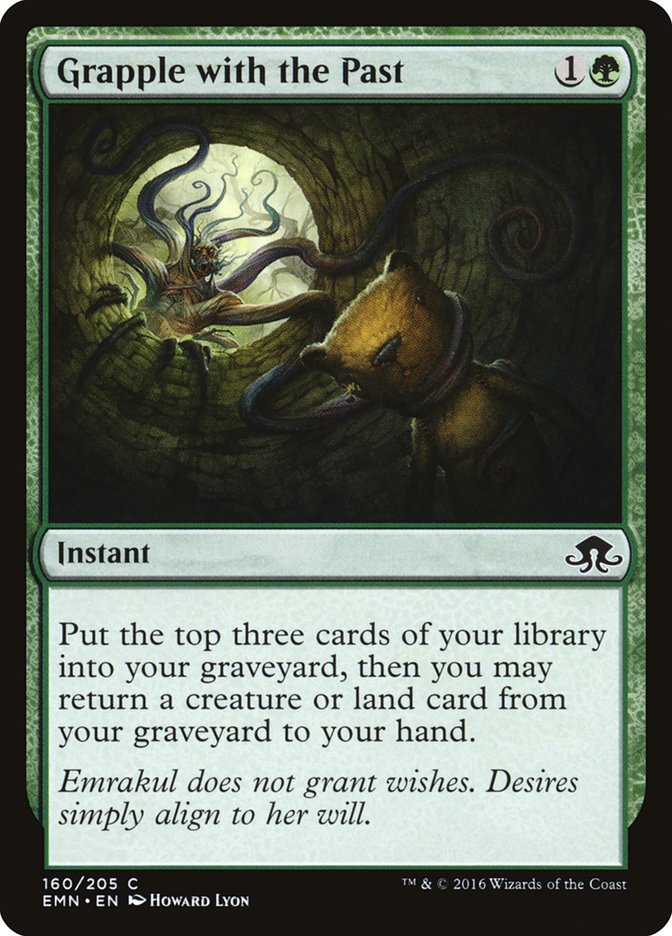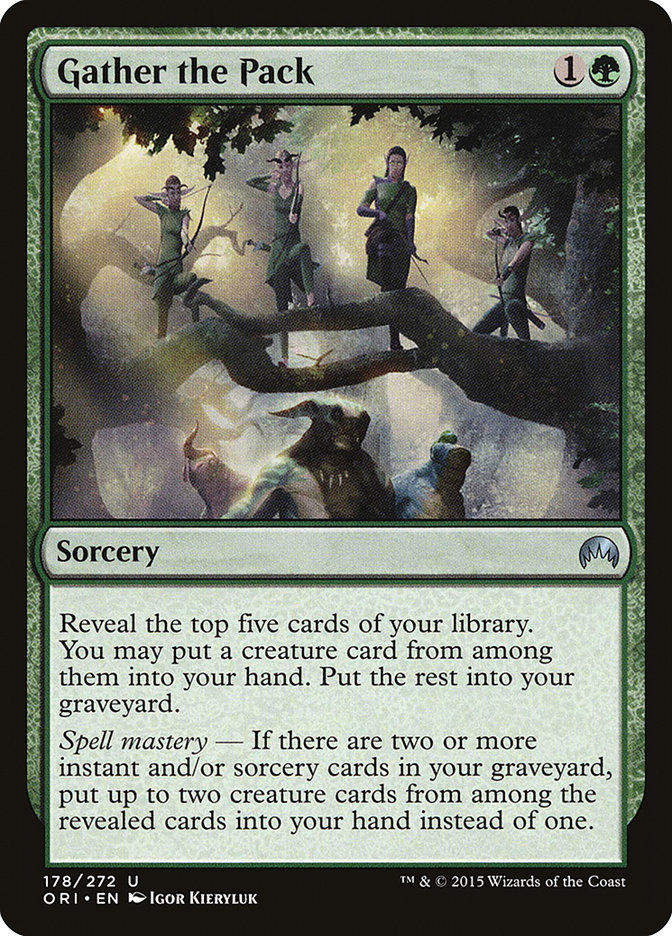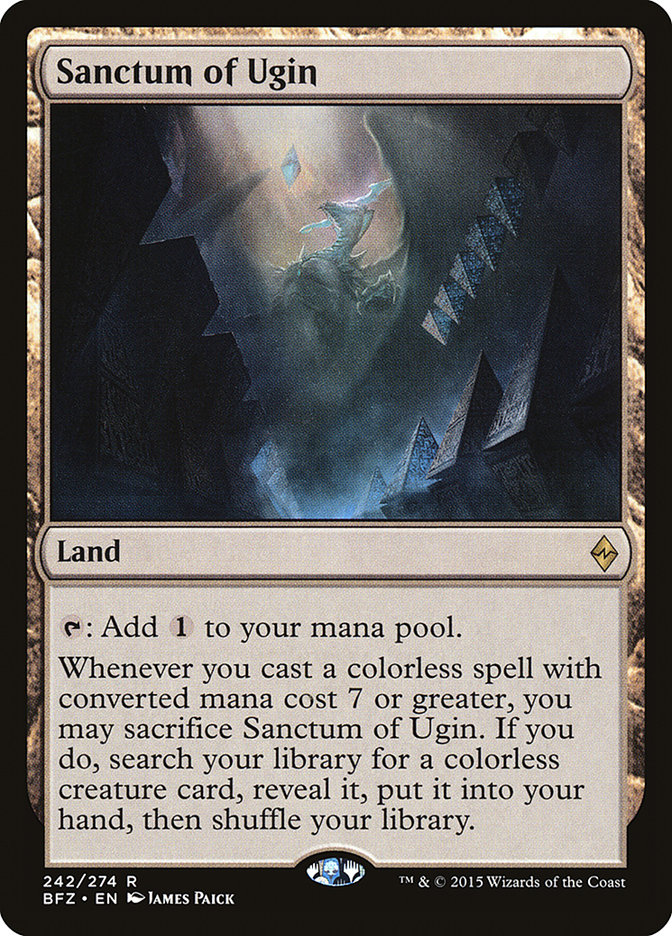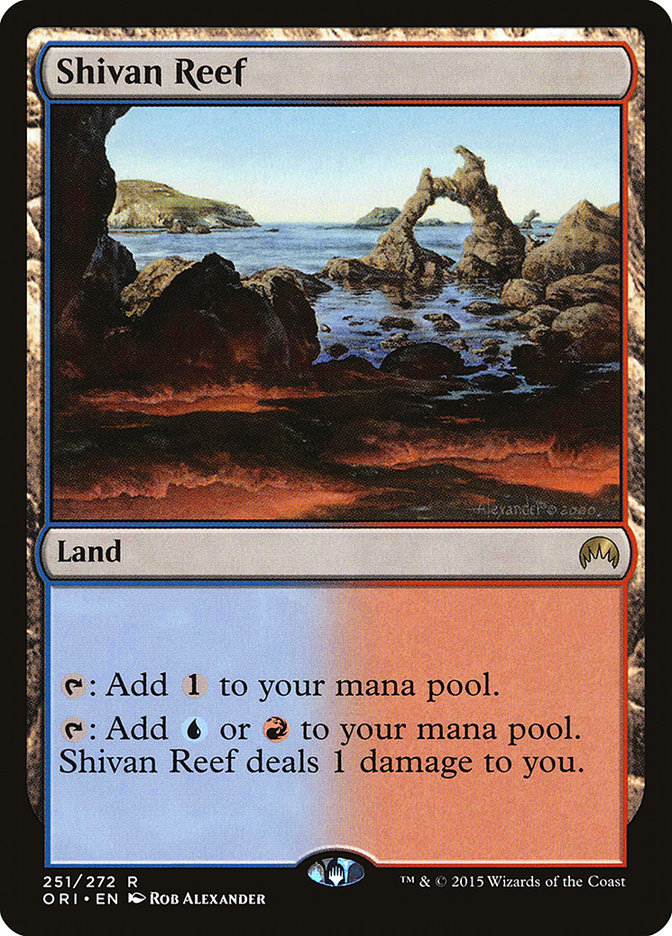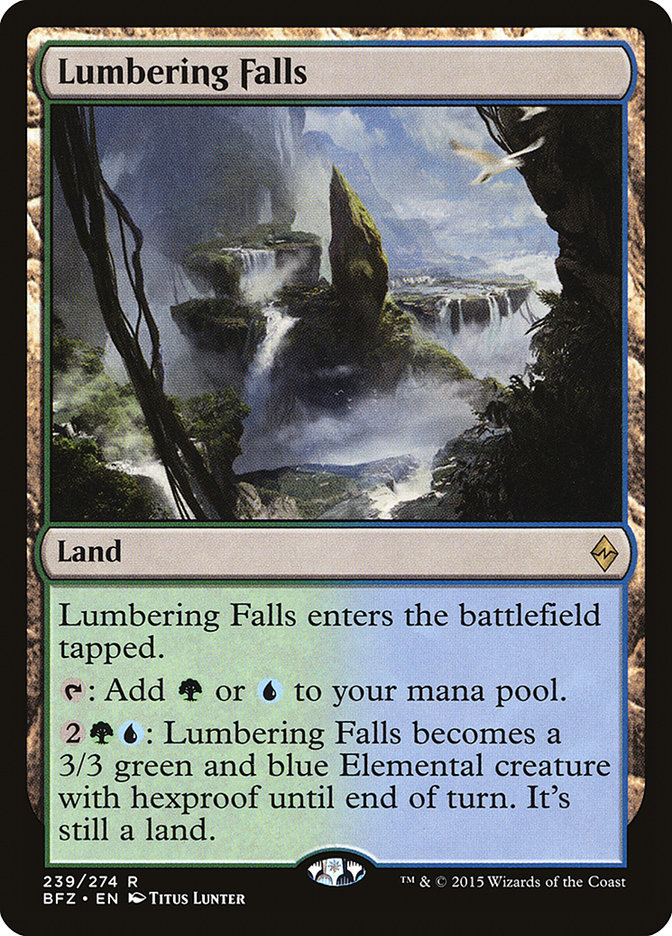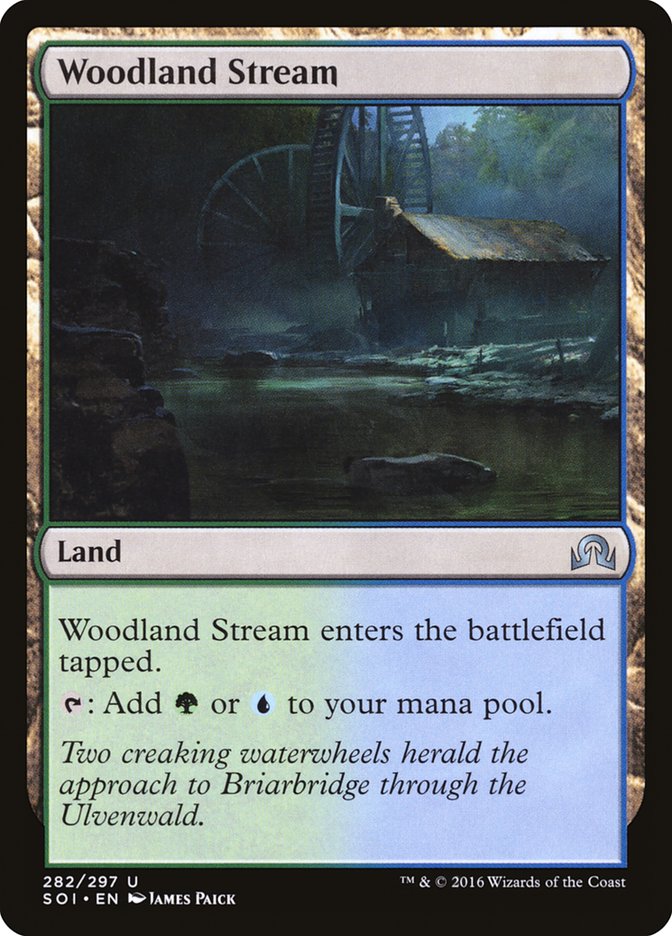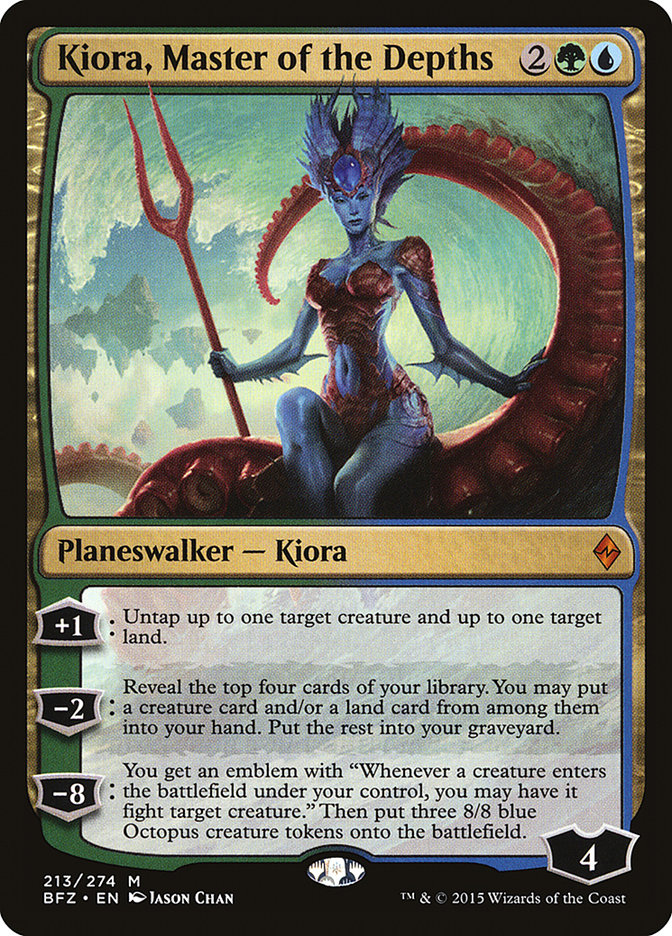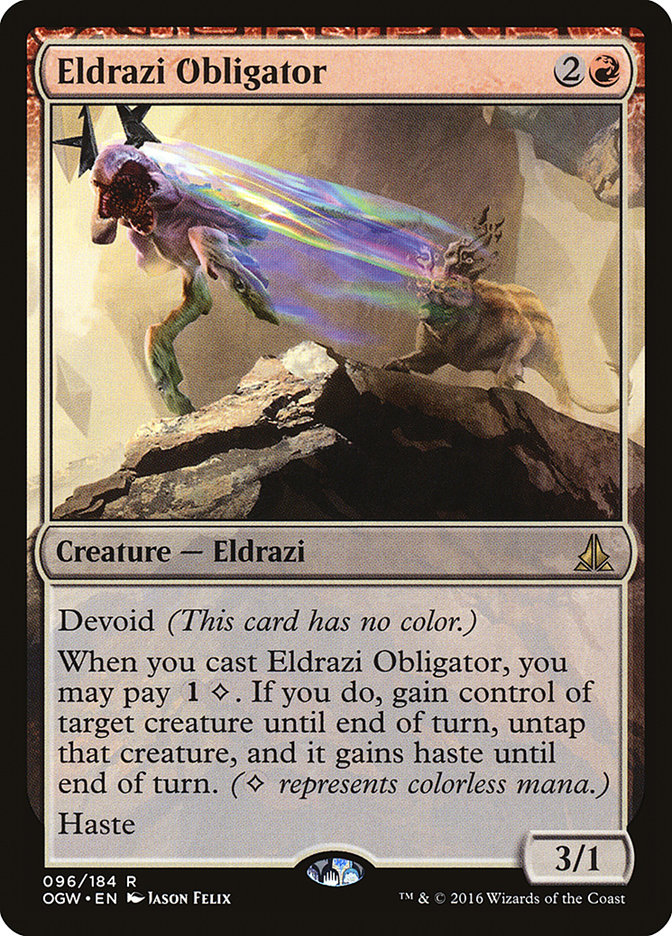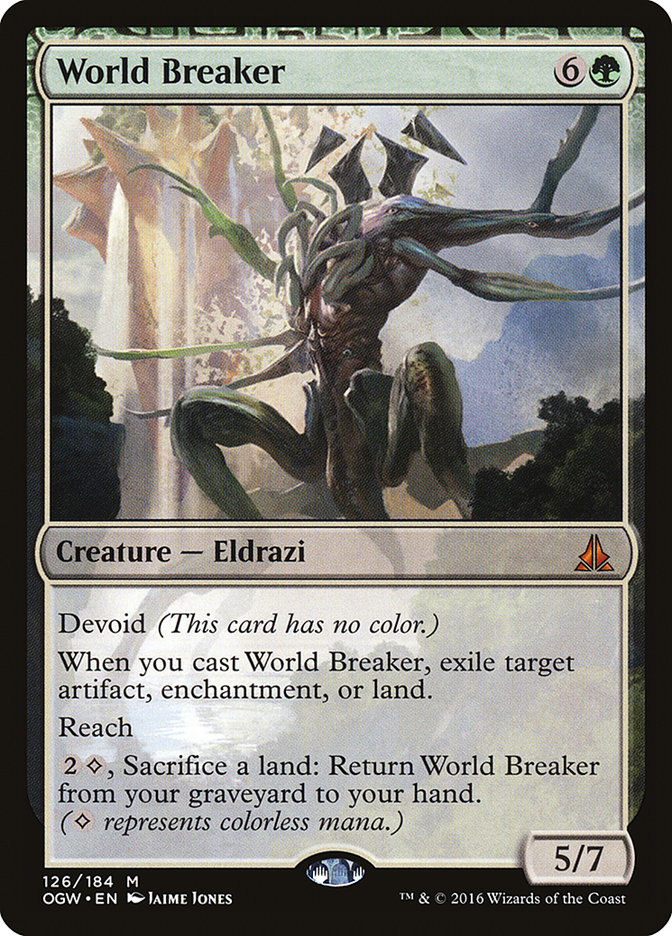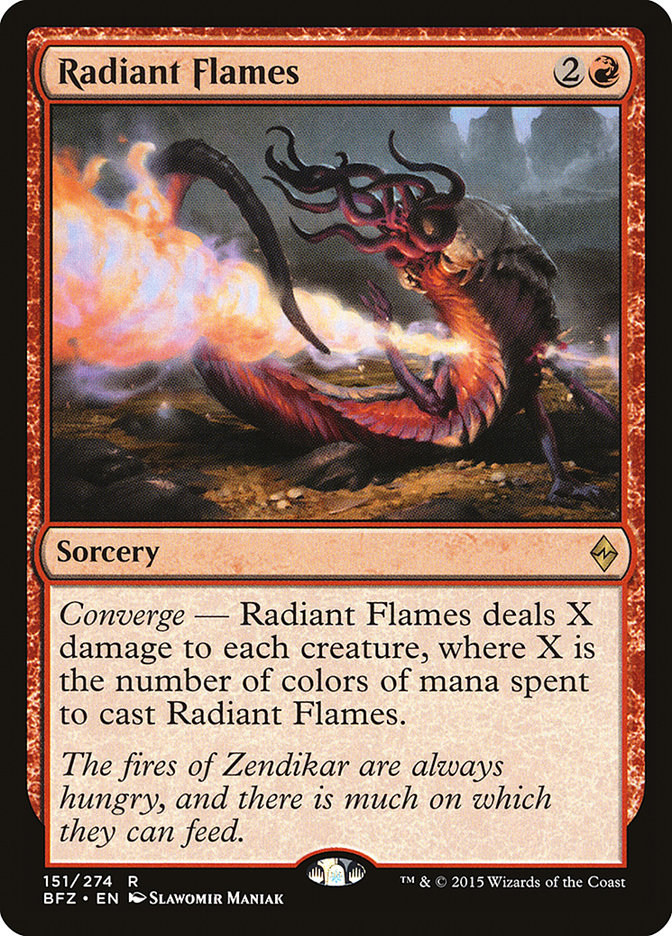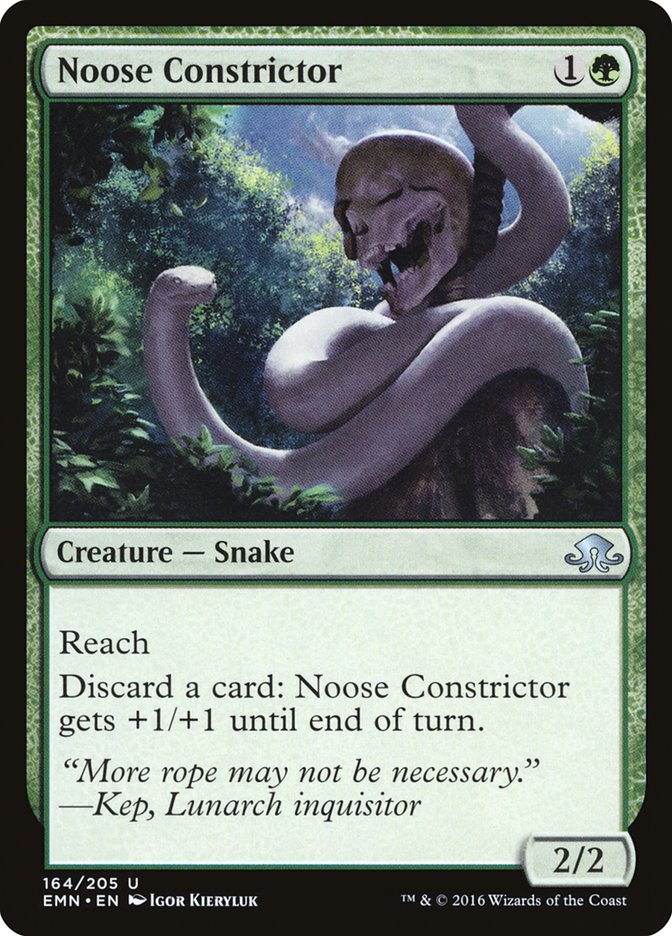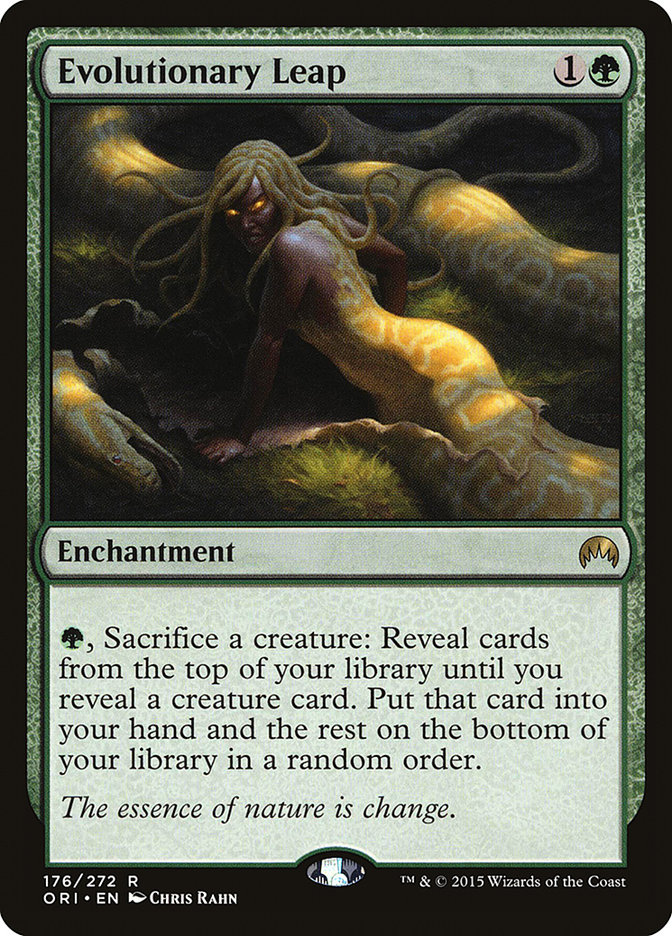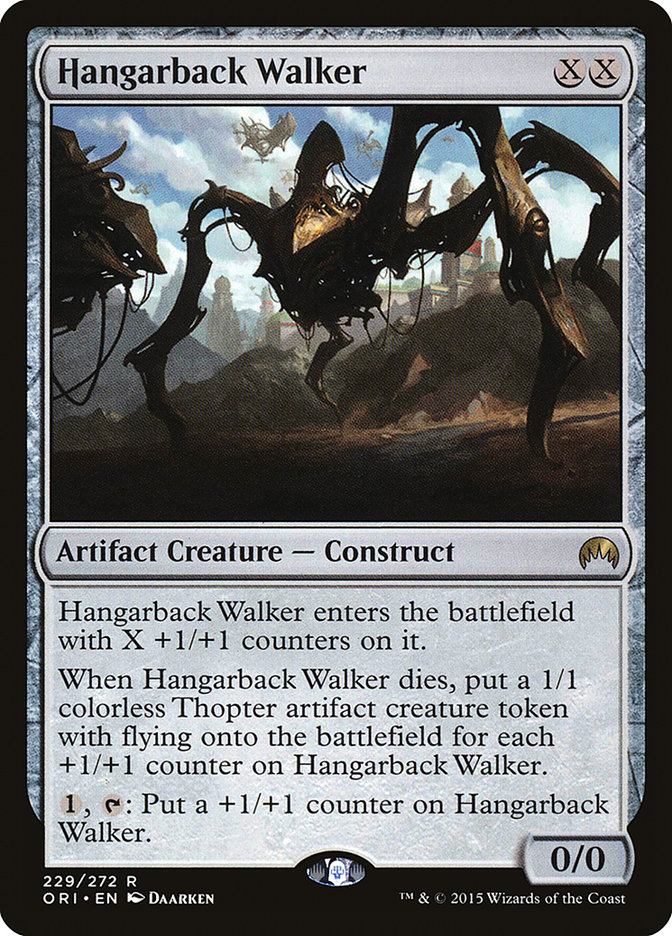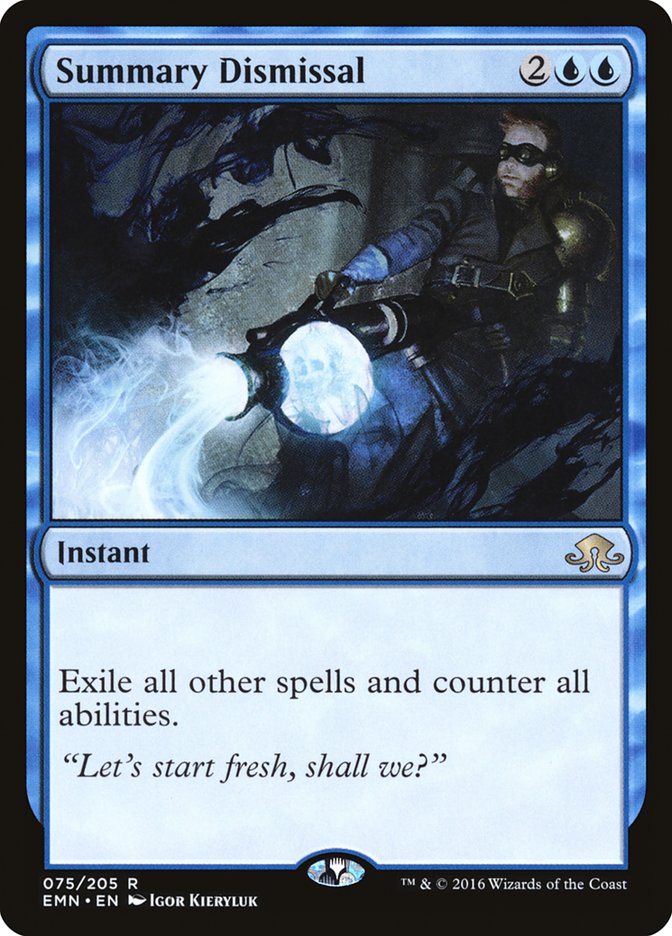“This is the hardest deck I have ever played because you have so many ways to tutor or dig and a large number of simultaneous triggered abilities. The sequencing and order of operations matters a lot. Most of the games come down to one crucial sequence where you turn the tide on your opponent and begin your lockout chain of Elder Deep-Fiends. I made several play mistakes over the course of the tournament, but luckily the deck was powerful enough to carry me out of those games in spite of my errors. I would recommend a lot of hours of practice before playing this deck in a tournament.”
– Andrew Brown, Emerging Victorious
He isn’t wrong. In fifteen years of playing Standard I can think of a handful of decks that were as difficult to play, all of which shared the massive number of tutors and were similarly unforgiving.
Part of the issue is that the sequencing isn’t only important, as Andrew said, but it isn’t simple or obvious. There are many small things to miss, and what you are trying to do or what is even going on is not always clear.
This guide’s goal is to reduce “a lot of hours” to some more manageable number. These are the small things I picked up in my time playing the deck and testing with Andrew.
General
You will win the game in one of three ways: resolving a Kozilek’s Return trigger that cripples your opponent, chaining Elder Deep-Fiend triggers while attacking for lethal, or chip shot damage.
The most difficult of these are Deep-Fiend chains as they involve mana and damage math on top of tutoring. Stop and think about how the game will progress. The two questions you need to ask are “Am I actually advancing my battlefield state by doing this?” and “Assuming I attack over each turn I Elder Deep-Fiend them, am I dealing lethal damage?”. If both are no, consider if you can set up for one of them to become true. A common example of not advancing your battlefield state is sacrificing Elder Deep-Fiend to Elder Deep-Fiend, which should be reserved for when the extra turn really matters in getting you to another key point.
Topsy-Turvy
Another obnoxious part of this deck is resolving the stack when you cast an emerge creature. Not only does the order matter, but the missed trigger rules mean you have to be pretty clear with what is going on. You often have four or five triggers happening from objects in basically every zone. I’ve gotten in the habit of physically stacking the cards making the triggers so I don’t miss anything in resolution.
Your Game 1 deck is super-linear and it is easy to pull too many pieces out and watch the whole thing fall apart. Try to only shave small numbers of things and try to minimize sideboarding if you are unsure.Andrew’s article has many good examples of this, so I’ll focus on identifying which cards can be trimmed in what spots so you can make new plans as things change.
The Maindeck
Kozilek’s Return negates most of the “upkeep or combat” questions on Elder Deep-Fiend. The typical choice is upkeep unless you are trying to aggressively tap all their blockers and want to tap what they cast or hold back. Also note your deck doesn’t have another instant for them to play around, so your opponent can maximize their actions to beat your one potential trick.
The real timing question is when you have to transition from setup to lockdown. What is their big threat? The usual big thing is managing Emrakul, the Promised End. Know if your opponent can cast it that turn, but also figure out if your chain ends with them dead or where Emrakul wouldn’t save them. If it doesn’t kill them and they only might have Emrakul, it is probably better to set up and accept defeat if they have it rather than give them a couple of mid-lock draw steps to find it.
Again, make sure you are using the Elder Deep-Fiend turns effectively. The damage or mana generated by untapping has to be relevant to make it worth casting.
Remember you can pay retail cost for emerge creatures. Also remember that if you are blowing your own stuff away with Kozilek’s Return, paying retail instead of sacrificing a dying creature is spewing mana value.
Pay close attention to where all your Elder Deep-Fiends end up as you self-mill. Knowing how many you have left to chain is very important.
Wretched Gryff is probably the most sideboarded card and only stays in completely if you need early Kozilek’s Return. You rarely cut them all, but two copies are negotiable, especially if World Breaker comes in as another seven-drop. You want at least seven ways to trigger Kozilek’s Return.
Always draw your card off Wretched Gryff before non-Primal Druid cast triggers. You might draw a Kozilek’s Return to cast and not want to put in that second Matter Reshaper off Matter Reshaper or draw the Elder Deep-Fiend you were going to Sanctum of Ugin for.
The main use of Lashweed Lurker is clearing permanents that don’t die to Kozilek’s Return: a planeswalker high on loyalty, a creature boosted to 5/6 via +1/+1 counters, or a Hangarback Walker. If your opponent has none of these, you can sideboard Lurker out.
You can Lashweed Lurker your own Elder Deep-Fiend for an extra Time Walk. It can also save a creature from a Kozilek’s Return you are triggering, usually Wretched Gryff.
Know how the trigger resolves. You choose to use Kozilek’s Return or not on resolution, and then damage immediately happens. If they sacrifice Selfless Spirit in response, you can keep Kozilek’s Return around and try again next turn. If they don’t use it, you can use Kozilek’s Return and their stuff immediately dies.
This last point leads to a big part of why you are so good against Bant. You can main phase a Wretched Gryff and force them to pop their Selfless Spirit. Then you can upkeep an Elder Deep-Fiend and tap a creature and a couple of lands to force a Collected Company or Archangel Avacyn. Then you can fire off again on your turn via Sanctum of Ugin or Grapple with the Past if they answered that sweep. Once you start trying to sweep them, it doesn’t stop until their stuff dies.
Kozilek’s Return being optional means you can also delay it for better value. Your first Wretched Gryff might not need to kill their random 2/3s if they are going to have to overextend into a later Eldrazi and can rebuild now. I’ve found this the most difficult decision to manage, so practice it against Bant.
Kozilek’s Return triggering is not an instant or sorcery spell. You can’t stop the “Flashback” with Dromoka’s Command. It is still an instant card, however, and does zero damage to Emrakul, the Promised End due to protection.
When hard-casting Kozilek’s Return against Spell Queller, think about what happens if they exile it and try to time your spell better if it is an issue.
Remember that casting Kozilek’s Return is also a way to put it into your graveyard. Remember this also kills any two-toughness or damaged creatures you control.
You can -3 Jace to cast Kozilek’s Return from graveyard the “normal” way. This happens sometimes versus Humans and Spirits.
You rarely want to sideboard out Kozilek’s Return. Most “control” decks have Grim Flayer; Kalitas, Traitor of Ghet; or Dragonlord Ojutai. You bring out one if they are light on creatures and don’t have 5/6s to clear. If they are creatureless and you want zero, this shorts your instant count for Traverse the Ulvenwald and forces you to leave in more sorceries for type balance.
The biggest thing with Jace, Vryn’s Prodigy is managing the transformation. Sometimes you need the body to emerge off mid-game and can’t activate. Early-game transforming is usually right, but start thinking about it on turn 4 or 5.
You will probably want to discard lands to Jace, Vryn’s Prodigy too often when starting out. Bias your decisions towards keeping lands as you get paid off later for them in a lot of ways: hardcast Eldrazi, Lumbering Falls, replacing Sanctum of Ugin, etc.
If given the chance to turn 3 Gather the Pack and then activate Jace, you are usually good to make the Telepath Unbound. The exception is if your hand is really bad and you need to filter cards more away.
If you are emerging Elder Deep-Fiend from a Jace with a full graveyard, you can activate Jace’s ability and respond by emerging for some good old Looter value.
One copy of Jace, Vryn’s Prodigy is generally cuttable, with a second being expendable if Noose Constrictor and Radiant Flames are coming in and the early 0/2 can’t block and just dies in a sweeper.
Don’t forget to activate Jace, Telepath Unbound. It’s easier than you think as often you want to wait until your Kozilek’s Return stack resolves to decide what to do with him.
If Primal Druid is not blocking much, a copy is expendable in sideboarding. I would avoid sideboarding out more, as the mana ramp is good once you start emerge chaining, since it gets you to the seven or eight mana for hardcast Eldrazi.
When resolving Primal Druid and an extra card trigger like Wretched Gryff or Matter Reshaper, figure out if you want extra land or not. If yes, then resolve Druid last to marginally increase the odds of finding a land.
Usually getting to two painless blue mana is your top priority when searching. The exceptions are not having painless green mana and having multiple green spells to still cast or not having any red mana and wanting to cast Kozilek’s Return.
Sylvan Advocate attacking into Primal Druid plus another creature comes up a lot. Yes, you might lose both creatures to Dromoka’s Command if you block. Primal Druid replaces itself, though, so the two-for-one is more of a one-for-one that accelerates you. That Dromoka’s Command was killing your Jace, Vryn’s Prodigy anyway, so unless you need to emerge next turn, you can pretty easily block.
Matter Reshaper blocking is one of your best tools to slow beatdown. Your deck is mostly hits, including a 25% chance of replacing itself with a creature. Unless you really need the jump-start body for emerge, you should default to trading off and getting the two-for-one.
We tried sideboarding this card out in small numbers. The logic was to get name diversity against Declaration in Stone and Reflector Mage. It was very wrong. Don’t do it.
Shaman of Forgotten Ways is really good with the sideboard Emrakul, the Promised End. This creates some tension, as it is also bad against Languish and Grasp of Darkness, but the rest of your deck is good enough there.
One copy of Shaman of Forgotten Ways is generally cuttable. Two are if you aren’t Emrakuling.
Similar to Jace, be aware of Nissa, Vastwood Seer transforming if you need to emerge off it. It is rare, as seven lands is often hardcast time, but it has come up once.
I am not actually sure where Nissa, Vastwood Seer is especially bad, but she was rarely amazing. She gets much worse on the draw in matchups where you really want your three-drop to battle their 2/3.
Similarly to Jace, Vryn’s Prodigy, you will want to get back a land with Grapple with the Past more than you think early-game.
If you are sacrificing Elder Deep-Fiend to Elder Deep-Fiend, you can Grapple with the Past back the dead copy for a bonus Time Walk.
You can choose zero cards with Grapple with the Past. This is rare, but sometimes you really want to transform Jace, Vryn’s Prodigy or get delirium.
Grapple with the Past is an instant. This often comes up against Spell Queller, where you can wait them out a bit if you really want the spell to resolve.
Grapple with the Past is one of your best cards, but one copy can be trimmed to keep the sorcery-instant balance for delirium when you aren’t also bringing in Kiora, Master of the Depths.
Gather the Pack is one of the most sideboarded cards. One copy almost always comes out and the second is also expendable when you don’t need to dig for an early Kozilek’s Return.
The spell mastery isn’t worth playing for most of the time, but don’t forget it exists and throw away value.
Don’t use Sanctum of Ugin if you are able to trigger it again soon and don’t need the extra creature until that point. The exception is if you want to play around Transgress the Mind or a similar spell.
When sideboarding against aggro, one copy of Sanctum of Ugin is removable as you are bringing in a ton of Traverse the Ulvenwald; more lands and the first Kozilek’s Return trigger or Eldrazi is usually good enough.
Similar to sideboarding out a Sanctum of Ugin, when you are going all0in on Traverse the Ulvenwald against decks where casting Kozilek’s Return isn’t important, one Shivan Reef can come out.
Remember Lumbering Falls can attack and block even if it is mostly there as Woodland Stream.
The Sideboard
Traverse the Ulvenwald is often going to be used to find a basic land. Don’t feel bad about it.
Just because there are four Traverse the Ulvenwald doesn’t mean you want all four against most decks. Two or three will suffice unless you need early red for sweepers or you are cutting Kozilek’s Returns and need to fill space.
If you are sideboarding in Emrakul, the Promised End, you usually want Kiora, Master of the Depths for its planeswalker type. Sideboarding in both is not required if casting her is hard to set up, for example, against G/W Tokens on the draw.
An animated Lumbering Falls is a creature you can untap for a bonus mana post-attack.
There is honestly too much that can happen with Emrakul, the Promised End to cover here and it deserves its own article. Good luck.
The most common times to search up Thought-Knot Seer are finding it as an extra threat you can slip in on a turn or timing it to knock out an Emrakul, the Promised End.
You can emerge off the creature you Eldrazi Obligator, but it takes a lot of mana.
You can exile Hangarback Walker with World Breaker.
Think about saving creatures you have on the battlefield through a sweeper. You can tap painlands for colorless to Radiant Flames for one or two. With Noose Constrictor, weigh if the cards you could discard are worth keeping a 2/2 with reach around.
Opposing Threats
Tireless Tracker lets your opponent grow a threat out of Kozilek’s Return range, not overextend, and Dromoka’s Command down an Elder Deep-Fiend. Prioritize killing it.
Collected Company is one of the best ways to rebuild in the format. Try to force it out of their hand before triggering Kozilek’s Return.
Tapping down double white mana when upkeep Elder Deep-Fiending when you know your Kozilek’s Return is being stopped by Selfless Spirit is important. Don’t let them Archangel Avacyn you on your turn by playing an untapped white land.
Evolutionary Leap allows your opponent to rebuild immediately post-Kozilek’s Return and transform Archangel Avacyn for a fast clock. Be ready to follow your sweeper with a chain of Elder Deep-Fiends.
Liliana, the Last Hope quickly threatens to ultimate and pulls a lot of damage her way as she leaves. If you can one-shot it by not letting it -2/-1 your Elder Deep-Fiend, consider waiting until the end step.
If you know you will have to handle a bigger or sticky threat, consider if you can set up to have multiple Kozilek’s Returns ready to fire.
This card will kill you almost immediately. Good luck.
If you emerge away a creature, your opponent immediately gets the Zombie token off Kalitas, Traitor of Ghet. It is a replacement effect and doesn’t use the stack. They can then respond to Kozilek’s Return by sacrificing the Zombie to make Kalitas a 5/6.
Summary Dismissal will get you and it will suck. They can’t play many, so hope they don’t draw it.
Overall
Accept that you will make mistakes with this deck. Hope they won’t cost you the game. Once you make the mistake, learn so you won’t make it again.
Know that you are doing this for a reason: your deck is fundamentally broken, and no one else’s is.


